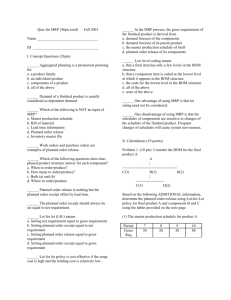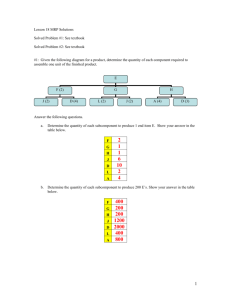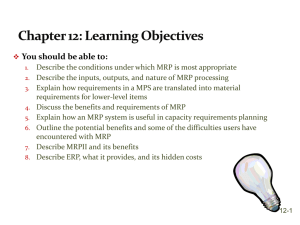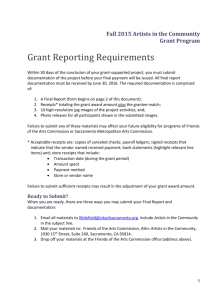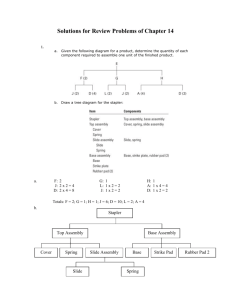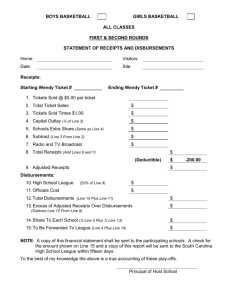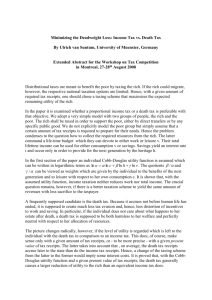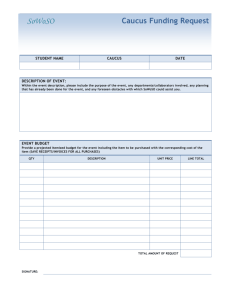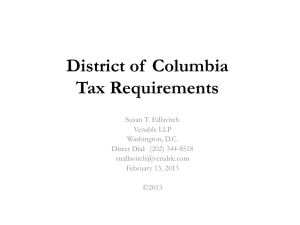CHAPTER 12. MATERIAL REQUIREMENTS PLANNING (Lecture 1)
advertisement
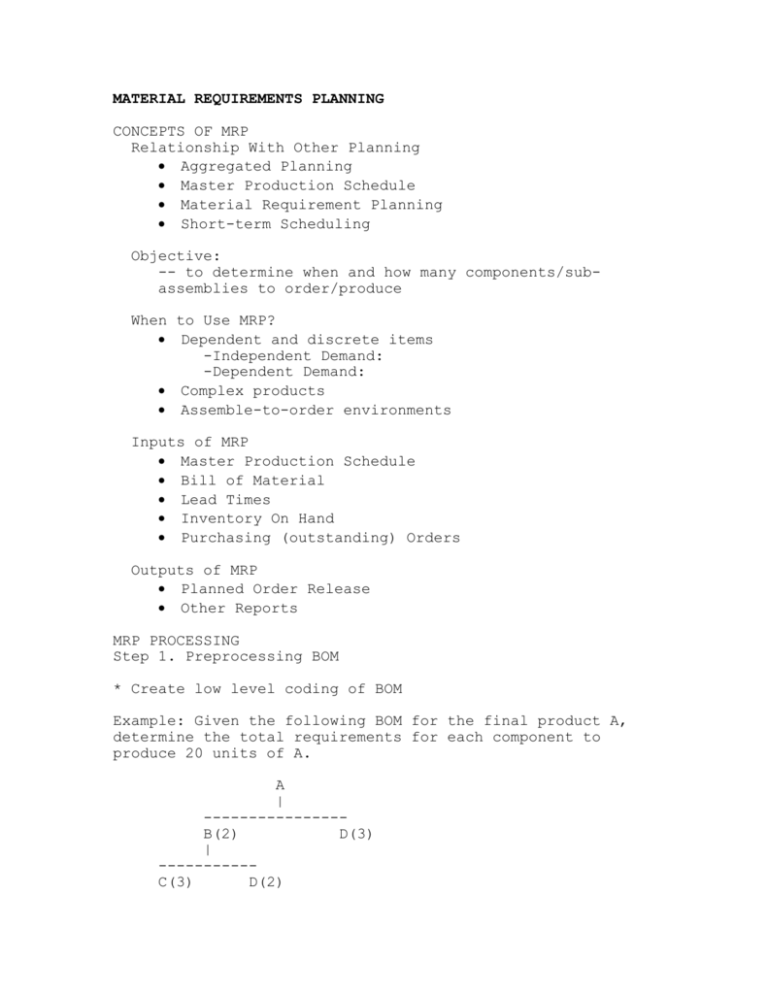
MATERIAL REQUIREMENTS PLANNING CONCEPTS OF MRP Relationship With Other Planning Aggregated Planning Master Production Schedule Material Requirement Planning Short-term Scheduling Objective: -- to determine when and how many components/subassemblies to order/produce When to Use MRP? Dependent and discrete items -Independent Demand: -Dependent Demand: Complex products Assemble-to-order environments Inputs of MRP Master Production Schedule Bill of Material Lead Times Inventory On Hand Purchasing (outstanding) Orders Outputs of MRP Planned Order Release Other Reports MRP PROCESSING Step 1. Preprocessing BOM * Create low level coding of BOM Example: Given the following BOM for the final product A, determine the total requirements for each component to produce 20 units of A. A | ---------------B(2) D(3) | ----------C(3) D(2) Low-level coding: An item with multiple appearances in BOM is coded at the lowest level it occurs. * Create Time-Phased Product Structure Based on Lead Time and BOM Example Continued: Draw the time-phased product structure based on the above BOM and the following lead time information for the final product and each component. Item Lead Time A 1 B 2 C 3 D 1 Step 2. Create master production schedule Master Production Schedule: Schedule of finished products Derived from aggregate planning Drive the MRP process with a schedule of finished products Quantities represent production not demand Quantities may consist of customer orders and forecasts Quantities represent what need to be produced not what can be produced Example continued: The following master production schedule for product A was determined from an aggregate planning: Period Gross Req 7 30 8 9 60 10 40 Step 3. Translate the end item requirements to components’ requirements Example continued: The inventory on hand and scheduled receipts for each components are shown in the following table: Item A B C D Inv. on Hand 10 25 15 30 Sch. 10 at 40 at 60 at Receipts Period 3 Period 2 Period 6 Prepare the planned-order release for all items. Gross requirements: Total expected demand for an item or raw material during each time period. Scheduled receipts: Open orders scheduled to arrive from vendors or elsewhere in the pipeline. Projected on hand: Expected amount of inventory that will be on hand at the beginning of each time period. Net requirements: The actual amount needed in each time period. Planned-order receipts: Quantity expected to be received by the beginning of the period in which it is shown. Planned-order release: Planned amount to order in each time period; planned-order receipts offset by lead time. 1 Item Info r Item Info r Item Info r Item Info r Gross Requirements Scheduled Receipts Projected on hand Net Requirements Planned-order Receipts Planned-order Releases Gross Requirements Scheduled Receipts Projected on hand Net Requirements Planned-order Receipts Planned-order Releases Gross Requirements Scheduled Receipts Projected on hand Net Requirements Planned-order Receipts Planned-order Releases Gross Requirements Scheduled Receipts Projected on hand Net Requirements Planned-order Receipts Planned-order Releases 2 3 4 5 6 7 8 9 10 LOT-SIZING TCHNIQUES Lotsizing: determining the planed-order receipts based on the net requirements Example: The net requirements for a component is given by the following table: Period 1 2 3 4 5 6 7 Net 8 14 6 12 5 15 8 Requirement Suppose the setup cost = $40/setup, inventory holding cost = $1/unit/period. Determine the planned-order receipts based on the following lotsizing policies: 1. Lot for lot (L4L): set planned-order receipts = net requirements. Period 1 2 3 4 5 6 Net 8 14 6 12 5 15 Requirements Planned-order Receipts 7 8 8 12 8 12 Total cost = 2. Part Period Balancing: choose planned-order receipts such that the holding cost is close to the setup cost in the periods covered by each planned-order receipt. Period 1 2 3 4 5 6 7 Net 8 14 6 12 5 15 8 Requirements Planned-order Receipts Inventory Economic Part Period = Periods Combined Trial Lot Size Total cost = 3. Other Lot Sizing Rules Part Periods 8 12 IMPLEMENTATION AND EXTENSIONS Updating MRP Regenerative MRP Net-change MRP System nervousness Closed-Loop MRP, Capacity Planning MRP-II: Manufacturing Resource Planning Expanded MRP Including planning for other area Computer supporting system Simulation capability; what if? BENEFITS AND LIMITATIONS OF MRP Benefits: Improve customer service Better use of resources Low level of WIP inventory faster response to demand changes Limitations: Need to have an expensive computer system MRP plans for material requirements first, the capacity planning is an after thought Need accurate and up-to-date inputs The reporting requirements are excessive Resistance from inside company * Gross requirements plan (assume no inventory on hand) Example Continued: Construct a gross requirements plan to meet the demand of 50 units of product A by week seven. 1 A Req. Date B C D Order Release Req. Date Order Release Req. Date Order Release Req. Date Order Release 2 3 4 5 6 7 L.T.
